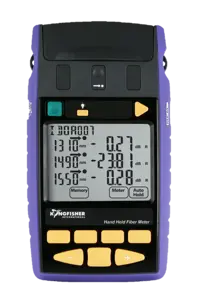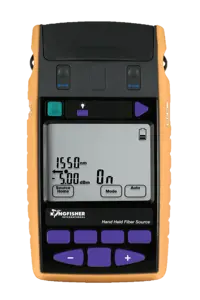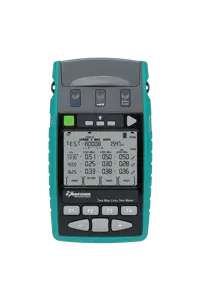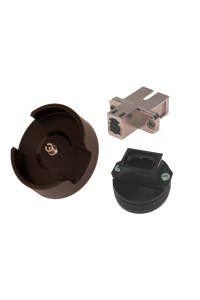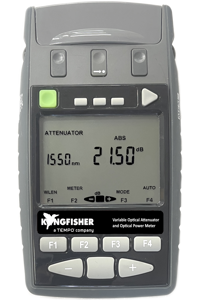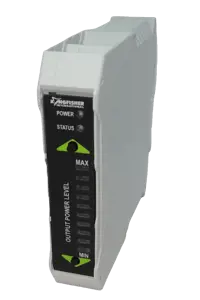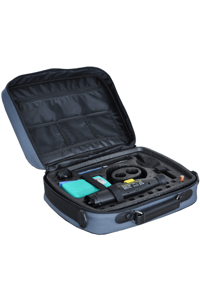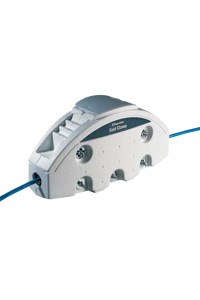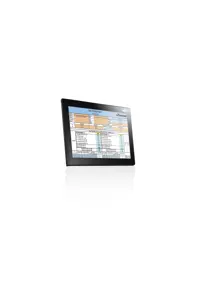Eye safety with a VFL (Visual Fault Locator) is a significant and sometimes poorly understood issue.
The Problem
If an organization has a legally unsafe VFL in use, then that organization becomes legally liable for laser eye damage, employee or not, whether or not the VFL caused the damage. Prove it didn't do it!. Apart from this, no one wants to be responsible for someone losing their eyesight in a needless industrial accident. Obvious failure to meet legal health and safety requirements could spark a wider investigation into the organization. International eye safety standards regard the user organization as responsible for eye safety, not the equipment manufacturer.
The actual problem is like this: if an unsafe VFL is directly aimed into an eye once in a lifetime, immediate permanent eyes damage is probable. Given the potential severity of the situation, just using warning labels and issuing work instructions is not adequate. It is highly desirable that it should be "impossible" for this to happen.
It is impossible to prevent occasional accidental exposure, since someone viewing a fiber end may not know that a VFL is active at the other end. It is also quite possible that while one person is viewing a fiber end, someone else turns on a VFL which is (possibly unexpectedly) connected through to the fiber under examination. So the practical solution is to ensure that eye safety is maintained when this happens, either through Class 1 - 2 lasers, or by using a viewer with appropriate safety.
From this, it can be seen that usage guidelines and work practices are helpful in practice, but ultimately cannot significantly change the general risk.
To use unsafe lasers is also not necessary, since other methods are available, eg a clip-on fiber identifier, VisiTest or other optical tone tracing arrangement.
The Legal Limits
There are relevant international & USA laser safety standards. Assuming the VFL is a typical 620 - 670 nm red laser:
Safety of visible lasers is usually determined by Classes 1, 2 & 2M. The guidelines below are for typical 10u - 150u core fiber. They may not apply to unconnected emitting devices (eg VFL pens) or any fiber that is single mode at visible wavelengths. So it is up to equipment manufacturers to state the safety classification of their equipment for total emitted power, which is likely to be different to these guidelines:
Class 1: Safe under all conditions, including use of magnifying devices
For red light at 635 nm, this Class allows a power level of 1.95 mW (+3 dBm)
Class 1M. Safe as long as magnifying devices are not used.
For red light at 635 nm, this Class allows a power level of 3.9 mW (+5.9 dBm)
Class 2: safe for visible light only, since the user looks away ("eye aversion" or "blink" response). The light appears so painfully bright, that anyone would look away. It is also safe to use with magnifying devices.
For red light at 635 nm, this Class allows a power level of 4.99 mW (+7 dBm)
Class 2M: Same as Class 2, except magnifying devices must not be used.
This assumes that the point source is divergent, and is not immediately in front of the eye, eg it is within normal eye focusing distance, so that most of the light actually misses the eye retina. It also assumes an eye aversion response.
For red light at 635 nm, this Class allows a power level of 10 mW (+10 dBm)
Required Work Practices :
Class 1: No safety precautions needed.
Class 1M: Hut required over work site.
Class 2: Hazard warning signs are required to be erected around the work site.
Class 2M: Hazard warning signs are required to be erected around the work site. Users must be trained not to use unprotected magnifiers.
Class 3 and above: Not legally allowed
Given that light from a VFL could end up in unexpected places, the safety environment is effectively "uncontrolled" even if the expected work site is "controlled". So Class 1 is the obvious compliant solution, requiring no special site precautions or work practices.
Maximizing VFL performance within legal safety limits
Many VFL devices (eg pens), have total power exiting the device as considerably higher than the power coupled into the fiber. An additional 7 dB is common. So although the coupled power may be eye safe, the device itself may not be, when shone directly into an eye. So care is needed when selecting equipment, and the coupled power may not be a realistic guide. Many manufacturers fail to specify this total emitted power level.
635 nm light appears to the human eye to be 5 dB brighter than 650 nm light of the same power level. Therefore, if a 635 nm VFL is selected for short distance work, it will appear to be much brighter. However, for long distance work, 650nm or 670 nm goes further.
The KI9800 VFL couples all of the exiting light into the fiber, so it achieves a 7 dB better result for the same instrument safety rating, and is also available with a 635 nm laser. This combination achieves much better compliant performance than a 650 nm pen.
Given the work practice restrictions in an uncontrolled work site, it may be preferable to use a Class 1 VFL, to avoid signage and hut restrictions.
VFL Range and Power
The distance capability of VFL units is commonly overstated. Here are a few clues:
- The range for viewing red light coming from a fiber end, is a lot further than the range for viewing light coming out from a fault, eg the side of a patch lead.
- The range can be a lot shorter if cable is wound on a drum, since the stressed cable absorbs the light quickly.
- The range depends greatly on ambient light conditions. In bright sunlight, the red light can be hard to see, other than coming out of the fiber end.
- Viewing light glowing through the side of a cable (eg from a break) is unreliable. There are many types of cable (including some yellow smf patch leads) that do not allow the light to show, even very close to the VFL, and particularly not over any great distance range.
- For "short distance work", a 635 nm VFL will easily out perform a 650 nm VFL, although it won't go as far, since the red light attenuates more rapidly. The human eye sees 635 nm light as about 5 dB more visible than 650 nm light, making a 635 nm VFL preferable for short distances. In other words, over a short range, a VFL with 635 nm & 0 dBm will produce a similar visibility to a VFL with 650 nm and +5 dBm.
- For "long distance" work, a 650 nm VFL will out perform a 635 nm VFL, although only for viewing a fiber end.
- A pulsed VFL light beam is more visible than a continuous light beam.
- Red light loss is typically 6 - 7 dB/Km on single mode fiber. So to go from a Class 2 VFL at about +7dBm, to a Class 2M VFL at about +10 dBm, will only achieve a range increase of about 0.5 Km . This small performance change makes the change in safety levels look very dubious. Also, the distance claims of many high power VFL vendors are hopelessly optimistic.
Associated / Alternative Equipment
Optical microscopes are frequently used for inspecting optical connectors ends. Any such microscope is legally safe if a Class 2 VFL is accidentally viewed. If a Class 2M VFL is viewed, then the microscope must provide at least 3 dB of attenuation at the VFL wavelength. The Kingfisher FiberSafe microscope is unique in having a red light filter. This microscope therefore offers excellent optical safety, even with an unsafe VFL.
Kingfisher optical light sources and optical power meters are equipped with a tone function, which provides safe long distance continuity capability, up to a range of about 220 Km.
Alternatively, a clip-on identifier and tone source can provide continuity testing up to a range of about 220 Km
Kingfisher's VisiTest solution allows practical use of both VFL and other methods with one source hook-up over very long distances, while also being eye-safe.



